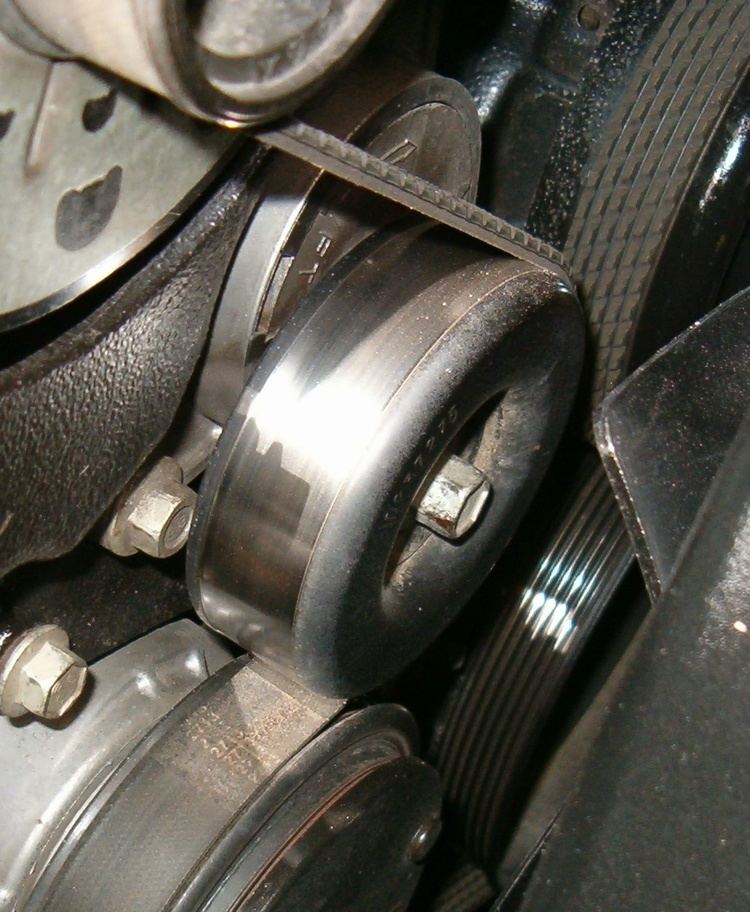 | ||
A serpentine belt, also known as a multi-vee, poly-v, or multi-rib belt, is a single, continuous belt used to drive multiple peripheral devices in an automotive engine, such as an alternator, power steering pump, water pump, air conditioning compressor, air pump, etc. The belt may also be guided by an idler pulley and/or a belt tensioner (which may be spring-loaded, hydraulic, or manual).
Contents
Variations
On some engine designs, the "back" (smooth side) of the belt may drive some accessories. This is typically limited to components requiring less torque or where a large angle of wrap is present. Such accessories will counter-rotate vs. the "normal" pulleys. Some vehicles use two serpentine belts for their system, such as the manual transaxle equipped Ford Taurus SHO, 1995–1999 DOHC Nissan Maxima, vehicles using the supercharged GM 3800 engine, and many BMWs.
Advantages
It is more efficient than the older multiple belt system and may consume less space in the engine compartment. By using a single, wider belt instead of multiple, thinner belts, the belt may be put under increased tension without stretching. Higher tension reduces slip, which increases belt life and mechanical efficiency. Reduced slip can allow the use of lower-ratio pulleys; this reduces the load on the engine, increasing fuel economy and available power. The tendency for V-belts to "flip over" in the pulley groove (at high RPM and/or when the belt stretches) is eliminated, and a serpentine belt is also much easier to maintain and replace, since there is no need to remove multiple belts in order to replace one of them, although newer adjustable-length V-belts ("link belts") can be put on without having to remove other belts, and their link design also allows a self-tensioning characteristic to reduce the risk of flipping over. Also since only one movable belt tensioner is required all of the peripheral components (alternator, A/C compressor, etc.) can simply be mounted to the engine without the need to swivel.
Disadvantages
The drawback of this single belt is that if the belt breaks or is knocked loose, the vehicle instantly loses multiple critical functions. The water pump, power steering pump, and alternator (for battery charging) would cease functioning. The vehicle becomes quickly unusable due to loss of engine cooling. The belt typically gives ample visual warning of impending failure, sometimes even totally shedding several grooves (ribs) while continuing to function acceptably.
